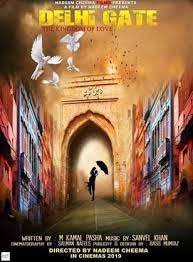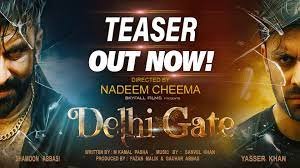Introduction
In the heart of Lahore’s historic Walled City stands Delhi Gate, a magnificent Mughal-era monument that has witnessed centuries of history, culture, and storytelling. As one of the six surviving gates of old Lahore, Delhi Gate has not only been a silent spectator to the city’s evolution but has also played a starring role in Pakistani cinema. This article explores how Delhi Gate has aged gracefully through the decades, maintaining its relevance in films watch on DesiCinemas while standing as a proud symbol of Pakistan’s cultural heritage.

Delhi Gate Through the Ages: A Historical Perspective
1. Mughal Grandeur (16th-18th Century)
Built during Emperor Akbar’s reign (late 1500s), Delhi Gate was part of Lahore’s original 13 gates. Its robust structure and intricate designs reflected Mughal architectural brilliance, serving as the main route between Lahore and Delhi. The gate’s aging walls still bear witness to royal processions, traders’ caravans, and historic events.
2. Colonial Transformations (19th-20th Century)
Under British rule, parts of Lahore’s Walled City were modernized, yet Delhi Gate retained its essence. The surrounding bazaars—like Akbari Mandi and Kashmiri Bazaar—continued thriving, preserving the gate’s old-world charm even as the city expanded.
3. Post-Partition Resilience (1947-Present)
After Partition, Delhi Gate became a symbol of Lahore’s enduring identity. Despite urbanization, restoration projects (like the 2010s Walled City Initiative) have slowed its aging process, ensuring its preservation for future generations.
Delhi Gate in Pakistani Cinema: From Classic to Contemporary
1. The Golden Era of Lollywood (1960s-1980s)
In classic Pakistani films, Delhi Gate often appeared as a nostalgic emblem of Lahore’s past:
-
“Shaheed” (1962): Featured the gate in black-and-white glory, evoking pre-Partition memories.
-
“Sangam” (1964): Used the gate’s arches as a romantic backdrop, contrasting youthful love with aging history.
2. The Decline & Revival (1990s-2010s)
As Pakistani cinema declined in the 1990s, Delhi Gate faded from screens. However, its revival in the 2010s marked a cinematic rebirth:
-
Documentaries: Projects like “Walled City of Lahore” (2018) highlighted its aging beauty.
-
Indie Films: Short films like “Virsa” (2020) captured its crumbling yet charismatic allure.
Watch Now At on Desi Cinemas
3. Modern Blockbusters (2020s & Beyond)
Recent films blend Delhi Gate’s historical weight with contemporary storytelling:
-
“The Legend of Maula Jatt” (2022): Though not shot here, its Mughal-inspired sets echoed Delhi Gate’s aesthetic.
-
“Parey Hut Love” (2019): Showcased the gate’s vibrant surroundings, proving old and new Lahore coexist.

Why Delhi Gate Never Gets Old: A Filmmaker’s Muse
1. Timeless Architecture
The gate’s Mughal arches, jharokas, and weathered brickwork offer a ready-made set for period dramas. Its aging facade adds authenticity to historical narratives.
2. Living Culture
The bustling bazaars around Delhi Gate—where generations of artisans, food vendors, and storytellers thrive—provide a dynamic backdrop for films about Lahore’s soul.
3. Symbolic Depth
Directors use Delhi Gate to represent:
-
Passage of Time: Its aging walls contrast with Lahore’s modern skyline.
-
Cultural Memory: A bridge between Pakistan’s Mughal past and urban present.
watch on desiCinema
The Future of Delhi Gate in Film: Preserving Legacy
1. Restoration & Tourism
Recent conservation efforts ensure Delhi Gate ages gracefully, attracting filmmakers and tourists alike. Projects like the “Delhi Gate Cultural Trail” could inspire more cinematic explorations.
2. Upcoming Film Projects
Rumored historical dramas—like a biopic on Dara Shikoh or a Partition-era love story—could feature Delhi Gate prominently.
3. Global Recognition
With Pakistan’s film industry gaining international attention, Delhi Gate may soon appear in global co-productions, sharing its aging yet ageless story worldwide.

Conclusion: An Ageless Icon
Delhi Gate stands as a testament to time—its walls may age, but its cultural and cinematic significance only grows richer. From Lollywood classics to modern hits, it remains a beloved muse for storytellers. As Pakistani cinema evolves, Delhi Gate’s legacy will endure, reminding audiences that some icons never grow old; they simply become legends.
Final Thought:
“Cities age, films fade, but landmarks like Delhi Gate immortalize history—frame by frame, brick by brick.”